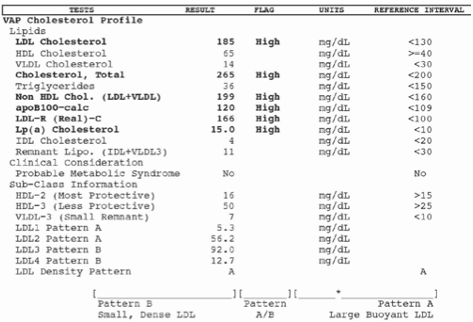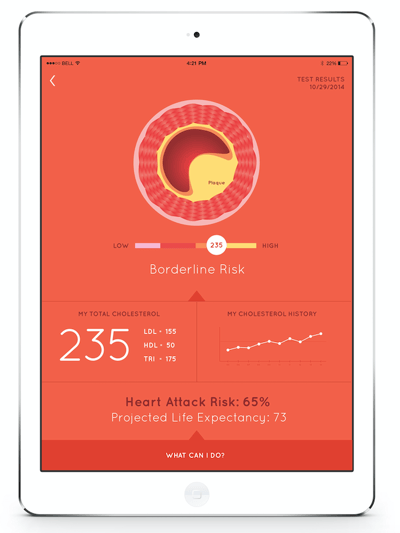The patient portal has become the primary consumer access point to a patient’s electronic medical record. Moreover, it is becoming an entirely new channel for the delivery of healthcare – a place where patients schedule online appointments, view messages and lab results, and take advantage of e-health services.
And while 87% of patients want electronic access to their record, actual portal usage hovers around 29%. For hospitals that have spent millions of dollars building this new service scape, something just doesn’t add up.
The root cause? Today’s patient portal (and the EHR) was built for quality and compliance, not consumers. Logging into the portal is like trying to get access to Fort Knox – with multiple layers of necessary (but frustrating) security. And, once inside the patient portal, 41% of users leave feeling frustrated with the navigation. Imagine if 41% of Amazon’s customers left feeling frustrated? I’m not sure they would be in business anymore.
Today’s patient portal needs to be overhauled with more human-centered design. Luckily, initiatives like the 21st Century Cures bill are gaining traction. Included in the bill’s priorities: “Support the certification and development of patient-centered EHRs so that patients have better access to their secure and up-to-date health information.”
To understand how the portal can be redesigned to be more patient friendly, let’s compare it to a more familiar physical service scape: a hospital exam room. Mayo Clinic, Kaiser Permanente, and other healthcare leaders have researched what constitutes a better exam room.
"How do we create a holistic experience where this organization is showing you care, compassion, and respect—and giving you all the medical information that you need?"
Kaiser Permanente CEO Bernard Tyson
These studies show that patients who used a redesigned room are not just more satisfied, they better-retain information about their health records and test results. Here are 4 ways that the online patient portal can be remodeled after the redesigned bricks and mortar hospital experience:
1. An easier check-in process
At the hospital, self-service kiosks are an increasingly common convenience compared to the physical check-in process. And while the patient portal is already online, it’s important to remember what “convenient” check-in means for a digital consumer.
Most online retail sites don’t make you login in and then ALSO answer a security question. Often, you can use Facebook Connect to quickly establish an account. From my phone, I can log in to many sites like Amazon with a simple scan of my fingerprint.
There are, of course, a lot of good reasons (HIPAA, data security) that today's patient portals feature cumbersome login processes. Using Facebook to login to the portal may never be a viable solution for healthcare. But patient portals could benefit from other secure login methods. A great start is to deliver a single-sign-on experience between a hospital’s website and patient portal.
2. A comfortable, safe space
In physical hospital spaces, studies have shown that soft carpets, leather exam tables, and desks with rounded edges create a greater sense of comfort for patients. And, interestingly, asymmetrical chairs (with only one armrest) do not convey a necessary sense of stability and security. These studies have shown that, by softening the physical boundaries, patients are able to approach their appointment with less hesitation and better consume the information being shared.
In digital user experience (UX), design is critical.
- 90% of users reported they stopped using an app due to poor performance
- 48% say that arriving on a business site that isn’t working on mobile indicates that the business simply doesn’t care
- Companies with highly effective UX outperform their peers
It’s time that patient portals stopped ignoring good UX design and move towards the comfortable environments available in everyday consumer apps like Uber. Design that is both intuitive and beautiful.
3. Reducing thumb twiddling
At Kaiser, the future vision of the reception area is a public square where patients can wander while they wait – exploring health services including yoga classes. By offering patients activities while they wait, you can reduce their anxiety and boost satisfaction.
On the patient portal, consider the anxious patient who keeps refreshing the page to see if his lab results are ready. There is opportunity for hospitals to serve up educational content to that user – such as a blog discussing how to manage cholesterol levels. With relevant information to occupy his time, the patient’s frustrations about waiting subside and he’s better equipped to understand the implications of his test results when they become available.
4. Making it personal
One study found that when more of the desk space in an exam room was perceived as belonging to the patient, the more engaged the patient was with the visit. And others have looked at how adapting the exam room – such as the size and shape of the exam bed to accommodate different shapes and sizes of patients – led to greater comfort and satisfaction.
And while the patient portal is already chock full of personal health information, most portals don’t give patients “ownership” of their electronic health record. Nor do they provide different ways to consume content based on patient preferences.
What if, instead of every patient seeing the same portal layout, they were able to customize their portal dashboard with the data that was most relevant to them (including not just lab reports but also educational health content).
And what if patients were given a choice in how they consume their health data? Some may prefer to read a detailed lab report, while others desire a digital walkthrough of their results. Still, others might benefit from a simple data visualization to help them really understand their cholesterol levels like in this reimagined lab report:
BEFORE

AFTER

Read more about the reimagined lab report
Getting a new portal experience off the ground
While patient portals will need an overhaul to become more patient friendly, the good news is that there is plenty of inspiration and learnings from other disciplines (like the architecture of the exam room) and also other industries and brands like Amazon, Uber, and Apple.
As hospitals have done with re-architecting the exam room, the process needs to start with the patient’s perspective. What are patients' information consumption preferences? What matters to them? Why do they use the patient portal? What devices do they use? All of these factors need to be considered in the redesign, along with best practices in usability and human centered design – a process that starts with the people you're designing for.



